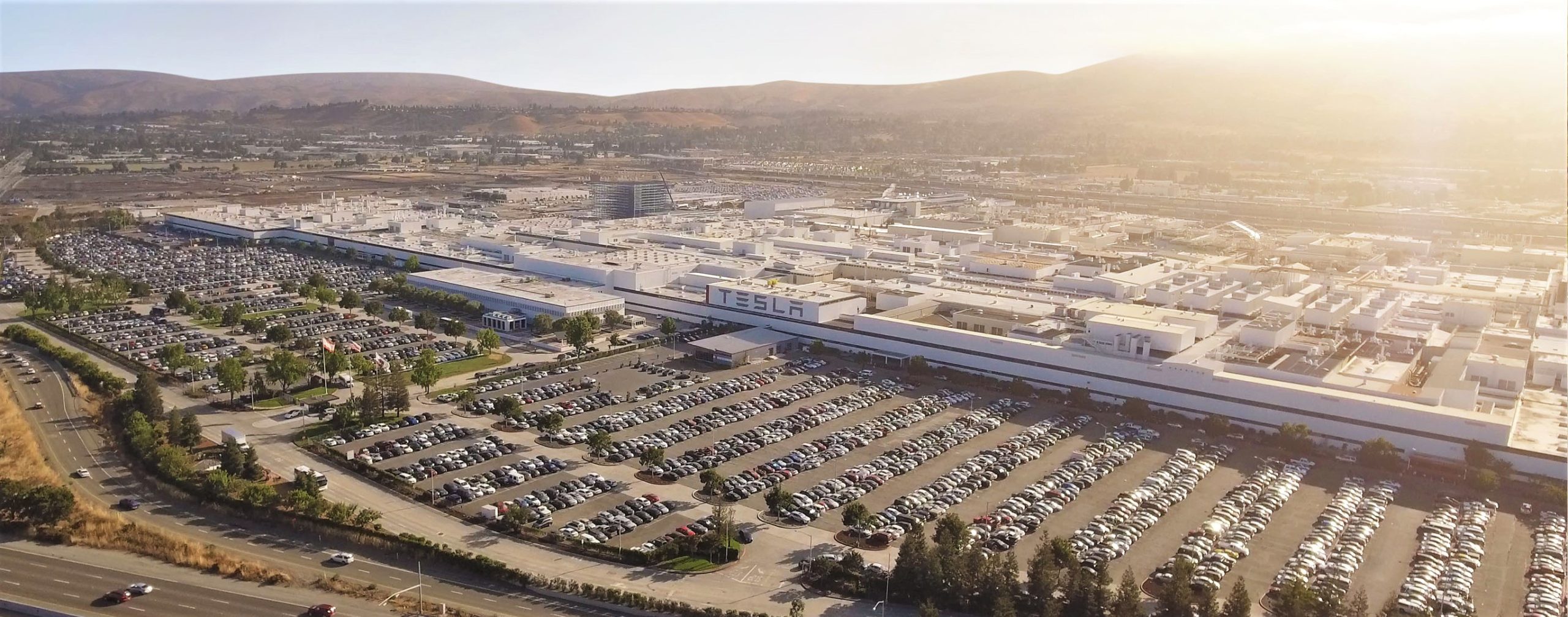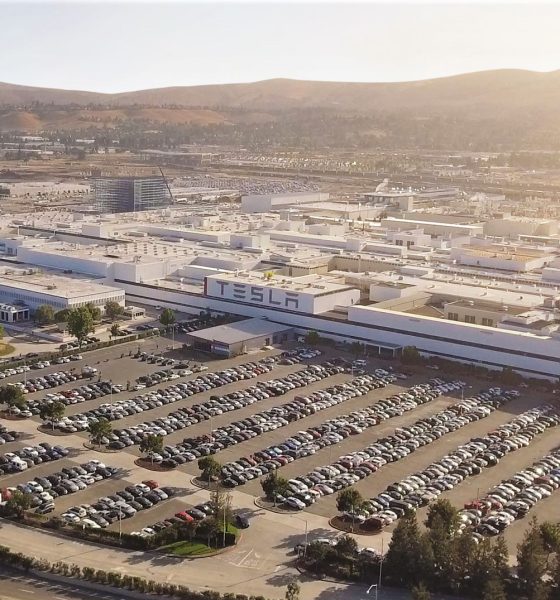

Investor's Corner
Tesla surprises with $312M profit for Q3 as Model 3 margins soar past 20%
Tesla’s third-quarter earnings for 2018 saw the California-based carmaker beat Wall Street revenue estimates after posting $6.8 billion in revenue and beating earnings estimates with a GAAP profit of $312 million.
The results, which were posted in an Update Letter to investors after the closing bell on Wednesday, October 24, showed third-quarter earnings of $1.75 per share on a GAAP-basis, shattering analyst estimates of -$.19 per share. Revenue was $6.82 billion versus an estimate of $6.33 billion. The company reported an adjusted non-GAAP profit of $512M or $2.90 per share.
Profitability
Tesla posted a profit of $312 million, attaining the ambitious target set by CEO Elon Musk earlier this year. The electric car maker went through great lengths to reach profitability, from a 9% layoff across the company back in June to a massive delivery blitz in the third quarter that was augmented by volunteer owners who helped deliver vehicles to reservation holders.
“With average weekly Model 3 production through the quarter (excluding planned shutdowns) of roughly 4,300 units per week, we achieved GAAP net income of $312 million. We also delivered on our internal cost efficiency targets, leading to GAAP Model 3 gross margin of more than 20%, which exceeded our guidance,” Tesla stated in the update letter.
This is the company’s first profitable quarter since Q1 2013, when the company posted a minor profit. The company also saw its free cash flow rise to $739M, versus a net loss of $436M last quarter.
Revenue
The company’s revenue for the third quarter consisted of $6.09B in automotive revenue and $399M from the energy and battery storage division. Automotive revenue saw an increase of 82% compared to the previous quarter. The energy and battery storage division saw an increase of 6.6% compared to the previous quarter. Overall, total revenue was up 70.5% compared to Q2 and up 229% year-on-year.
The drastic increase in automotive revenue was mainly driven from the company’s Model 3 sales, which rose to over 56,000 deliveries in the quarter. Tesla deployed 93 MW of energy generation and 239 MWh of energy storage products in the third quarter as well, both of which grew over the previous quarter.
Model 3
Elon Musk once noted that the Model 3 was a “bet-the-company” vehicle — a car whose success or failure would determine Tesla’s future. The challenges that Tesla faced with the Model 3 ramp are well-documented, with Elon Musk describing the ordeal as one of the most painful periods of his career. The third-quarter proved to be a breakthrough for Tesla, though, as the company was able to make headway in both the number of vehicles produced and delivered.
The Model 3 had a gross margin exceeding 20% in the quarter. Tesla continues to expect this to rise to 25%, excluding any ZEV credits.
“Model 3 mix was strong in Q3 due to the launch of AWD and Performance variants. While the average selling price will gradually decline as we introduce lower priced variants, we are not expecting this to impact profitability. Model S and X Performance mix declined roughly 4-fold since 2015, yet Model S and X gross margin (excluding ZEV credits) continued to improve by roughly 600 basis points over the same period of time. Margin growth was caused by gradual cost improvements driven by lowering labor hours per vehicle, reduced cost of raw materials, and various other cost efficiencies. We continue to target a 25% gross margin ex-ZEV credits on Model 3.” – Tesla’s Q3 Letter
Today’s trading session ended with TSLA down 1.92% at $288.50. After-hours, the stock was trading up 8.3% to $312.45.
Tesla’s full Q3 2018 Update Letter can be accessed here.

Investor's Corner
Tesla stock closes at all-time high on heels of Robotaxi progress

Tesla stock (NASDAQ: TSLA) closed at an all-time high on Tuesday, jumping over 3 percent during the day and finishing at $489.88.
The price beats the previous record close, which was $479.86.
Shares have had a crazy year, dipping more than 40 percent from the start of the year. The stock then started to recover once again around late April, when its price started to climb back up from the low $200 level.
This week, Tesla started to climb toward its highest levels ever, as it was revealed on Sunday that the company was testing driverless Robotaxis in Austin. The spike in value pushed the company’s valuation to $1.63 trillion.
Tesla Robotaxi goes driverless as Musk confirms Safety Monitor removal testing
It is the seventh-most valuable company on the market currently, trailing Nvidia, Apple, Alphabet (Google), Microsoft, Amazon, and Meta.
Shares closed up $14.57 today, up over 3 percent.
The stock has gone through a lot this year, as previously mentioned. Shares tumbled in Q1 due to CEO Elon Musk’s involvement with the Department of Government Efficiency (DOGE), which pulled his attention away from his companies and left a major overhang on their valuations.
However, things started to rebound halfway through the year, and as the government started to phase out the $7,500 tax credit, demand spiked as consumers tried to take advantage of it.
Q3 deliveries were the highest in company history, and Tesla responded to the loss of the tax credit with the launch of the Model 3 and Model Y Standard.
Additionally, analysts have announced high expectations this week for the company on Wall Street as Robotaxi continues to be the focus. With autonomy within Tesla’s sights, things are moving in the direction of Robotaxi being a major catalyst for growth on the Street in the coming year.
Elon Musk
Tesla needs to come through on this one Robotaxi metric, analyst says
“We think the key focus from here will be how fast Tesla can scale driverless operations (including if Tesla’s approach to software/hardware allows it to scale significantly faster than competitors, as the company has argued), and on profitability.”

Tesla needs to come through on this one Robotaxi metric, Mark Delaney of Goldman Sachs says.
Tesla is in the process of rolling out its Robotaxi platform to areas outside of Austin and the California Bay Area. It has plans to launch in five additional cities, including Houston, Dallas, Miami, Las Vegas, and Phoenix.
However, the company’s expansion is not what the focus needs to be, according to Delaney. It’s the speed of deployment.
The analyst said:
“We think the key focus from here will be how fast Tesla can scale driverless operations (including if Tesla’s approach to software/hardware allows it to scale significantly faster than competitors, as the company has argued), and on profitability.”
Profitability will come as the Robotaxi fleet expands. Making that money will be dependent on when Tesla can initiate rides in more areas, giving more customers access to the program.
There are some additional things that the company needs to make happen ahead of the major Robotaxi expansion, one of those things is launching driverless rides in Austin, the first city in which it launched the program.
This week, Tesla started testing driverless Robotaxi rides in Austin, as two different Model Y units were spotted with no occupants, a huge step in the company’s plans for the ride-sharing platform.
Tesla Robotaxi goes driverless as Musk confirms Safety Monitor removal testing
CEO Elon Musk has been hoping to remove Safety Monitors from Robotaxis in Austin for several months, first mentioning the plan to have them out by the end of 2025 in September. He confirmed on Sunday that Tesla had officially removed vehicle occupants and started testing truly unsupervised rides.
Although Safety Monitors in Austin have been sitting in the passenger’s seat, they have still had the ability to override things in case of an emergency. After all, the ultimate goal was safety and avoiding any accidents or injuries.
Goldman Sachs reiterated its ‘Neutral’ rating and its $400 price target. Delaney said, “Tesla is making progress with its autonomous technology,” and recent developments make it evident that this is true.
Investor's Corner
Tesla gets bold Robotaxi prediction from Wall Street firm
Last week, Andrew Percoco took over Tesla analysis for Morgan Stanley from Adam Jonas, who covered the stock for years. Percoco seems to be less optimistic and bullish on Tesla shares, while still being fair and balanced in his analysis.

Tesla (NASDAQ: TSLA) received a bold Robotaxi prediction from Morgan Stanley, which anticipates a dramatic increase in the size of the company’s autonomous ride-hailing suite in the coming years.
Last week, Andrew Percoco took over Tesla analysis for Morgan Stanley from Adam Jonas, who covered the stock for years. Percoco seems to be less optimistic and bullish on Tesla shares, while still being fair and balanced in his analysis.
Percoco dug into the Robotaxi fleet and its expansion in the coming years in his latest note, released on Tuesday. The firm expects Tesla to increase the Robotaxi fleet size to 1,000 vehicles in 2026. However, that’s small-scale compared to what they expect from Tesla in a decade.
Tesla expands Robotaxi app access once again, this time on a global scale
By 2035, Morgan Stanley believes there will be one million Robotaxis on the road across multiple cities, a major jump and a considerable fleet size. We assume this means the fleet of vehicles Tesla will operate internally, and not including passenger-owned vehicles that could be added through software updates.
He also listed three specific catalysts that investors should pay attention to, as these will represent the company being on track to achieve its Robotaxi dreams:
- Opening Robotaxi to the public without a Safety Monitor. Timing is unclear, but it appears that Tesla is getting closer by the day.
- Improvement in safety metrics without the Safety Monitor. Tesla’s ability to improve its safety metrics as it scales miles driven without the Safety Monitor is imperative as it looks to scale in new states and cities in 2026.
- Cybercab start of production, targeted for April 2026. Tesla’s Cybercab is a purpose-built vehicle (no steering wheel or pedals, only two seats) that is expected to be produced through its state-of-the-art unboxed manufacturing process, offering further cost reductions and thus accelerating adoption over time.
Robotaxi stands to be one of Tesla’s most significant revenue contributors, especially as the company plans to continue expanding its ride-hailing service across the world in the coming years.
Its current deployment strategy is controlled and conservative to avoid any drastic and potentially program-ruining incidents.
So far, the program, which is active in Austin and the California Bay Area, has been widely successful.








